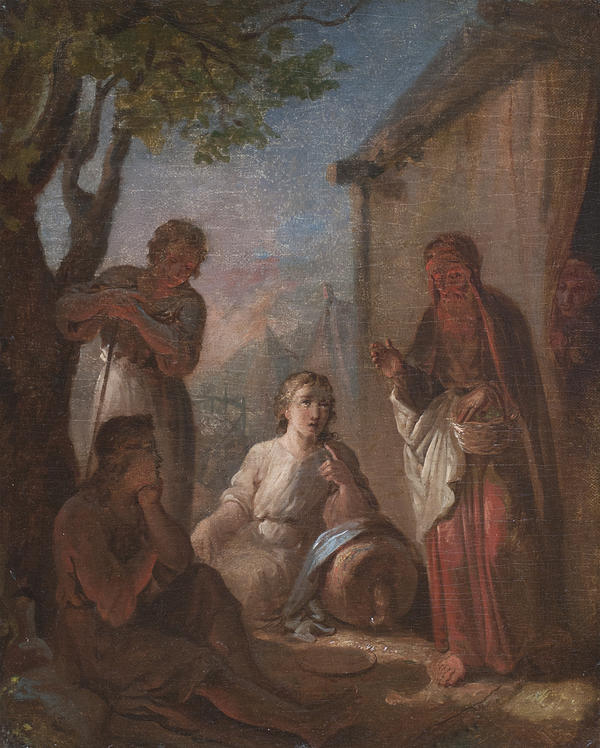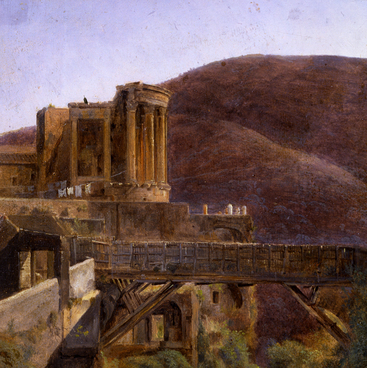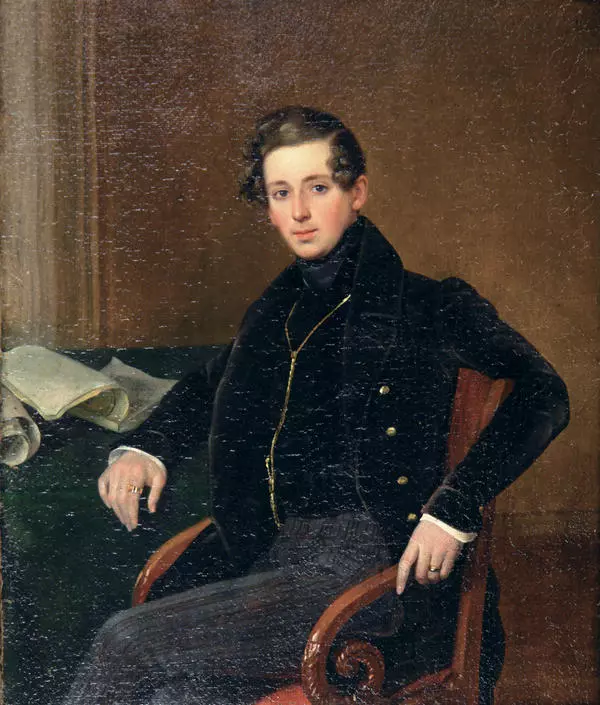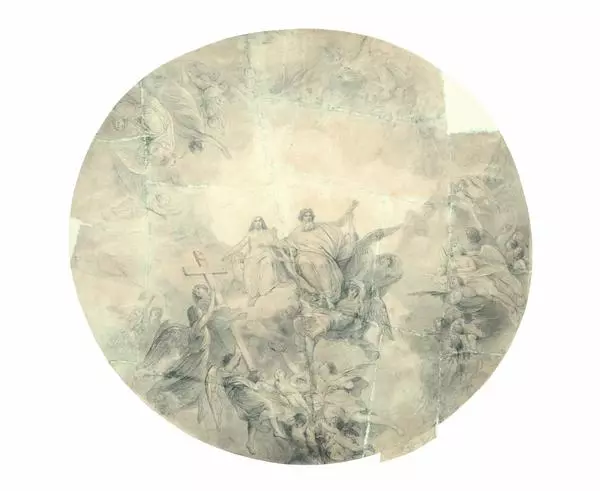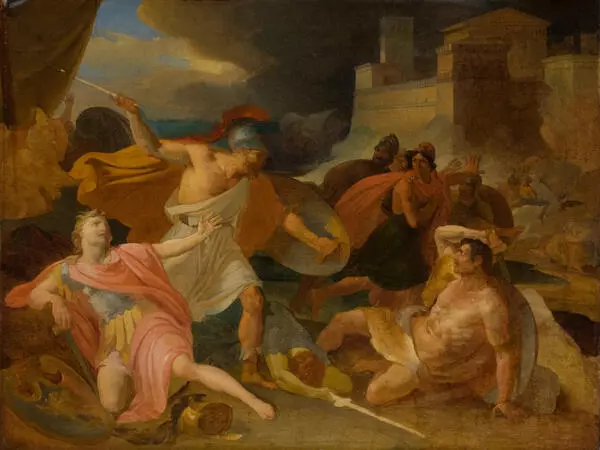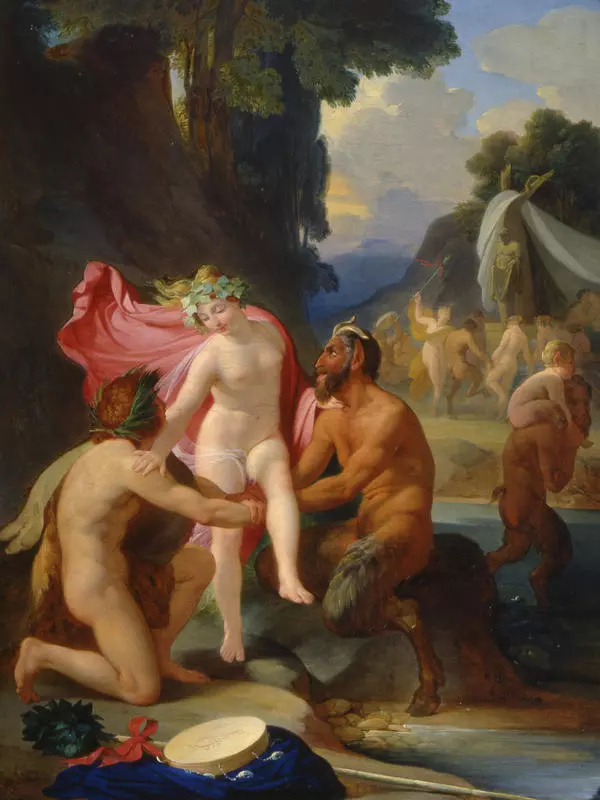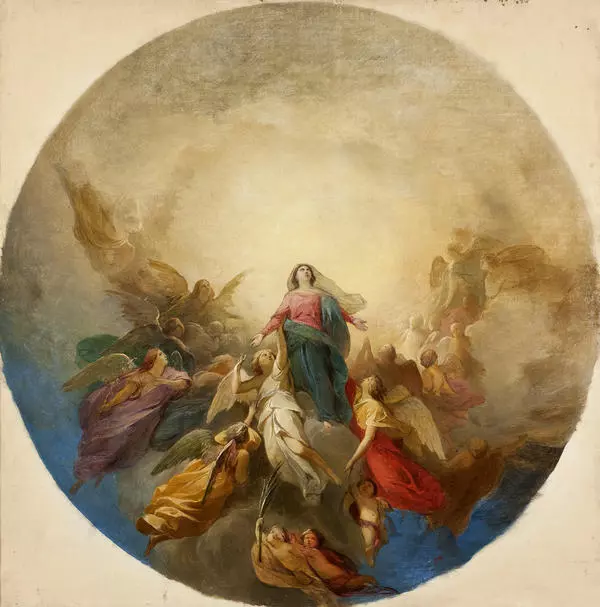During his whole life, Petr Vasilyevich Basin was connected with the Imperial Arts Academy – first, he was its graduate pensioner, then over forty years he taught there, became a professor of painting and got the rank of an actual civil councillor. Most of Basin’s creative works are monumental paintings; he participated in decorating several churches, the interiors of the Winter Palace, the Kazan Cathedral, St. Isaac’s Cathedral, and the Moscow Christ the Saviour’s Cathedral.
“The Three Travellers” has a special place among the artist’s creations. This small easel painting must have been done by the master in his mature years when his artistic manner had undergone certain changes. It had become freer, the lines more relaxed and movements of the brush wider. In the Three Travellers, well defined plastic forms and rigid lines give way to soft silhouettes and gliding outlines. Basin’s picture is lit with flickering night light which emphasises a magical semi-mystical character of the unravelling event—the talk of God’s messengers and Abraham.
After this meeting and the words said by the visitors, the life of Abraham, Sarah and their numerous offspring will change. The event had a profoundly symbolic meaning for Christians - the appearance of three travellers in Abraham’s home was perceived as the appearance of the Holy Trinity—God the Father, the Son and the Holy Spirit. In the earlier medieval iconography and in the old Russian tradition, this event was depicted as the Old Testament Trinity. In his picture, Basin presents a different treatment of this biblical theme appearing at the New time. For the New Russian art, depicting the Trinity as a visit of three travellers to Abraham in a domestic context and a landscape is a rare phenomenon— Alexander Ivanov’s sketch of Three Travellers done a bit later is about the only thing that comes to mind.
Basin’s picture has household details – a basket in the old man’s hand, tents in the background. They reflect one of the meanings of the event, the meaning of it being real. The true meaning of the parable is expressed by Basin with various artistic means. The mysterious faces of the travellers, the expressive gestures of their hands, the pent-up curiosity of Sarah looking out from behind the tent curtain— all these are meant to convey the significance of what is happening. One the travellers is placed in the centre of the picture; the figures of the other characters are placed almost symmetrically around him; the picture is flanked with an oak tree on the left and a tent on the right. The composition looks well-proportioned and balanced and graphically demonstrates that romanticism in Basin’s work was intertwined with some features of classicism. This phenomenon was typical of Russian painting of the mid19th century.

